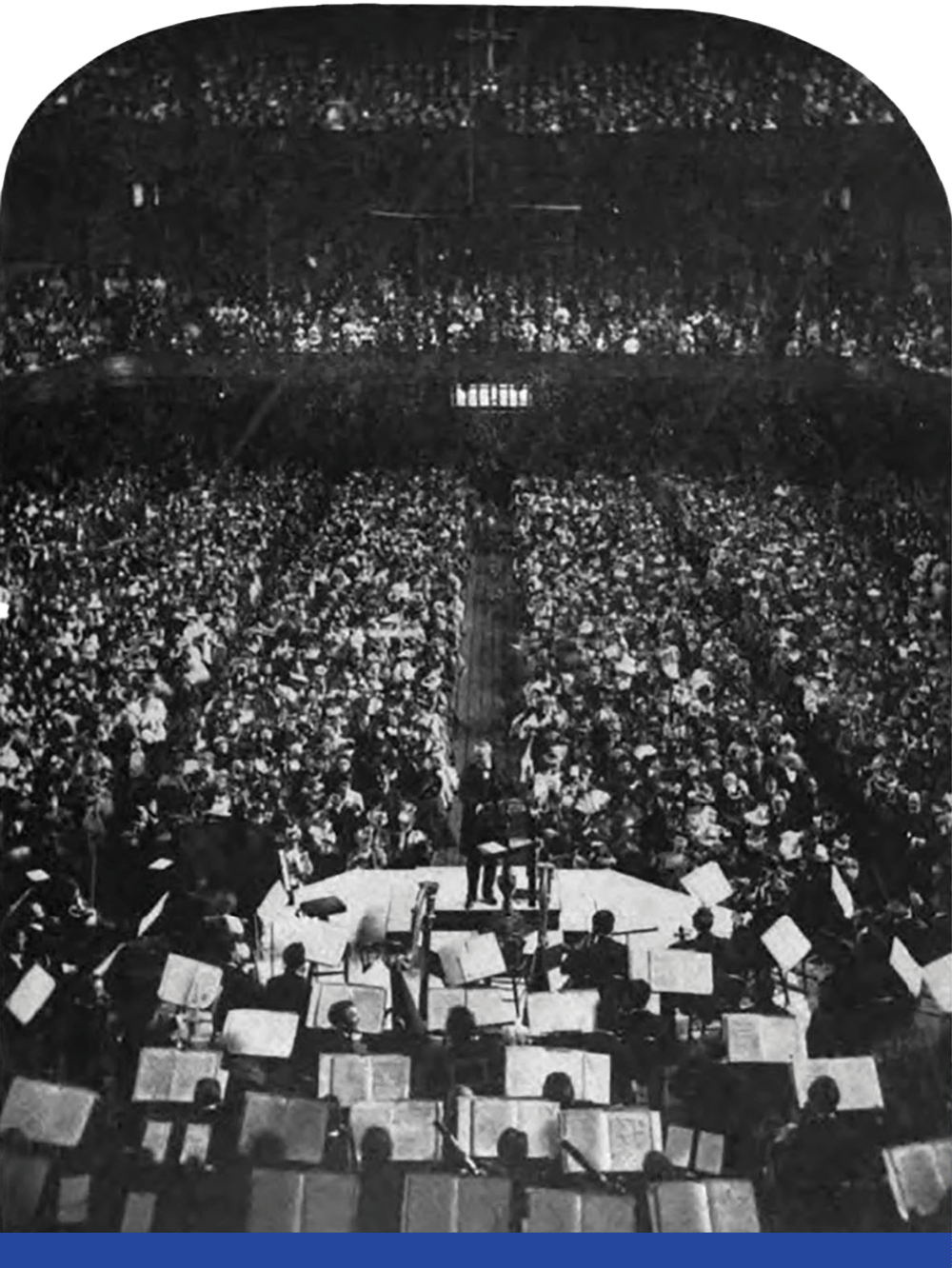Cincinnati's Modern Musical Landscape
by Tyler M. Secor
“[A] crowning jewel in the diadem of the Queen City—The May Festival.”
—Charles T. Greve, 1892.
The formation of the May Festival in 1873 catalyzed what is today’s culture of arts and music in Cincinnati and put the City of Cincinnati on the map as a hub for music and art. After the first May Festival, the Chicago Tribune wrote, “the result of that festival to-day is, that Cincinnati is the first musical city of the West.” Other arts and music organizations quickly followed.
As noted in Craig Doolin’s article, “Beginnings of the Cincinnati May Festival and Music Hall," the 1875 Festival led to the construction of the Festival’s home, Cincinnati’s iconic Music Hall, in 1878. Reuben R. Springer, a successful business man and the person who made the initial donation to build Music Hall, wrote, “The Musical Hall building to be located in the center of the lot, and so planned and constructed as to be capable of being used for Exposition purposes in connection with suitable buildings that may be constructed on the North and South to the limits of the lot.” By the 1878 May Festival, only the center section of Music Hall had been built; the north and south “wings” were built between 1878 and 1879 and opened in the fall of 1879. These wings were built to hold popular industrial expositions. The North Wing, known as Machinery, or Power, Hall, and the South Wing, known as the Art, or Horticultural, Hall housed the Seventh Cincinnati Industrial Exposition in September 1879. Among the 250,000 guests that visited this exposition was President Rutherford B. Hayes and General W. T. Sherman.
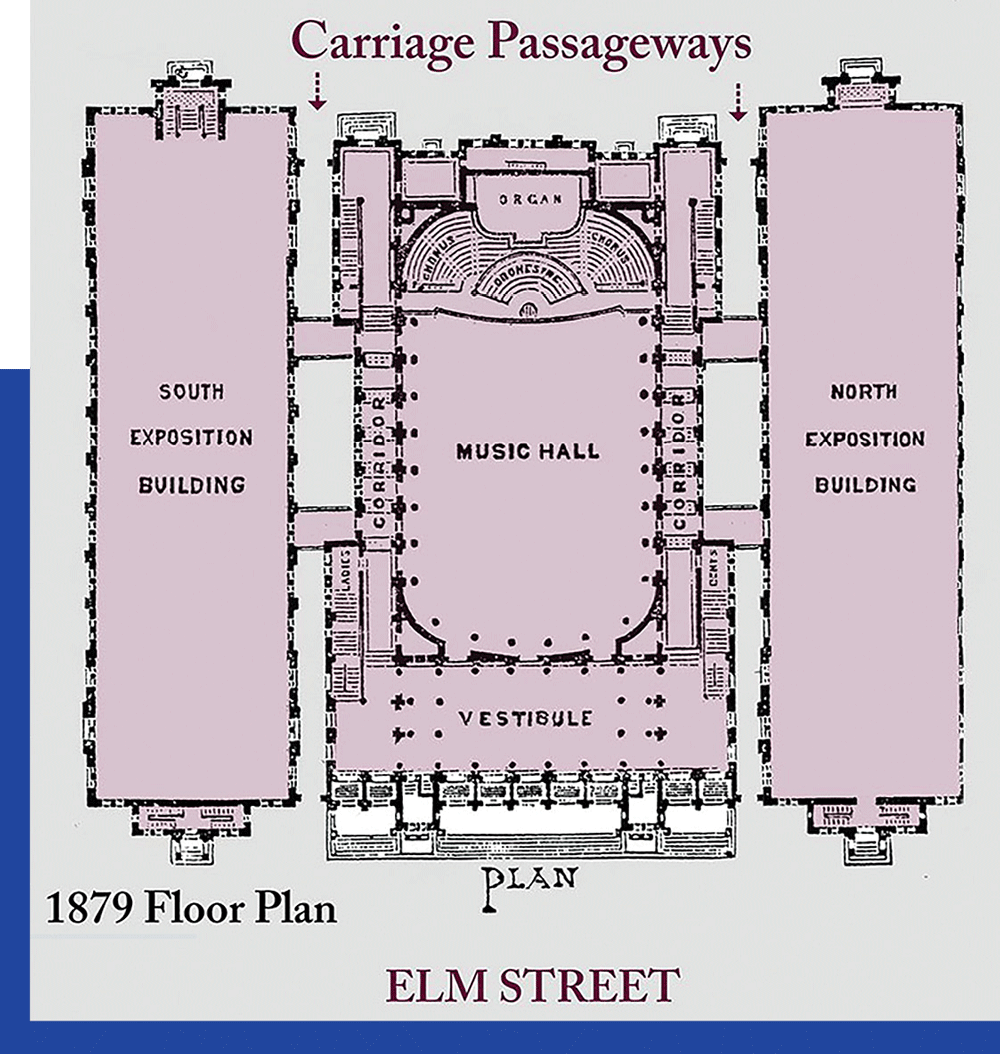
These wings, or halls, have been used for a variety of purposes throughout the years. The North Hall was renovated in the 1920s to include a 6,000-seat arena for sporting events such as basketball, wrestling, boxing, swimming, tennis, ice skating, gymnastics, bowling and roller derby. Currently, the North Hall holds the offices for the Cincinnati Opera and Cincinnati Arts Association, a scene/carpentry shop, and the Harry T. Wilks Studio. An arched roof, three-quarters of which was glass, adorned the top of the South Hall until 1927. With a glass roof, the South Hall was used to house exhibits of plants and landscaping. In 1927, the South Hall was renovated to include a ballroom for popular bands and dancing. Today, the South Hall houses Cincinnati Symphony Orchestra and May Festival offices, while the ballroom remains.
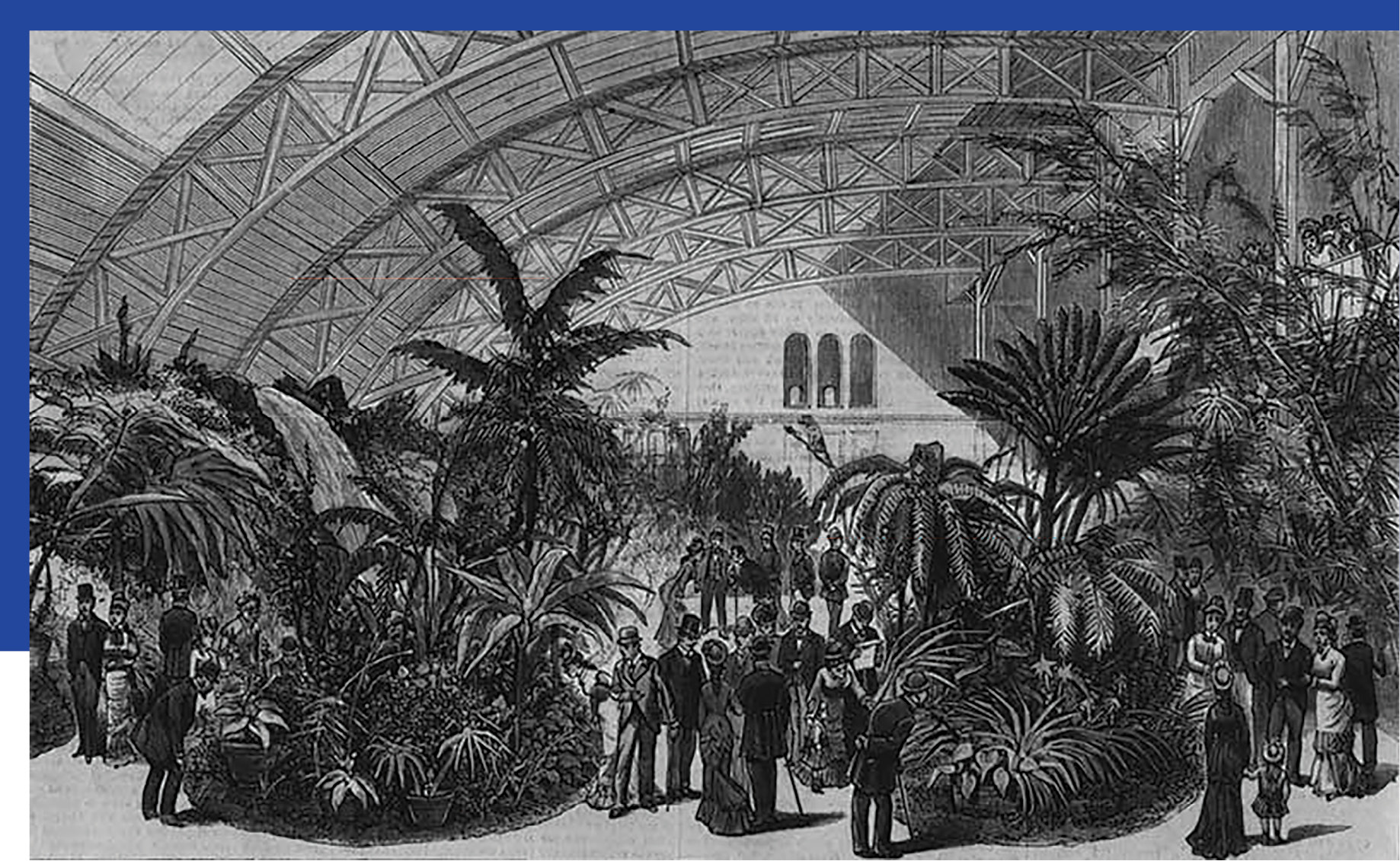
The founding of the College of Music quickly followed the first May Festival. Established on October 14, 1878, this college was led by then May Festival Music Director Theodore Thomas and rented many of Music Hall’s rooms for their rehearsals, recitals and concerts, including Dexter Hall, which is known today as Corbett Tower). The Cincinnati Conservatory of Music had existed since 1867, when founder Clara Baur rented a room in Miss Nourse’s School for Young Ladies. The Conservatory is believed to be the first residential conservatory in the U.S. and helped to form the National Association of Schools of Music (NASM). In 1955, the College of Music and the Conservatory of Music would merge to create The College-Conservatory of Music (CCM). CCM would go on to merge with the University of Cincinnati (forming the UC-CCM) in 1962 to create the school of music that is still active today.
Cincinnati was home to the first Black-owned conservatory in the U.S. Founded by Dr. Artie Matthews and his wife, Anna Howard, in 1921, the Cosmopolitan School of Music provided advanced educational and musical opportunities for African Americans. The June Festival, an annual African American choral festival produced by the Cincinnati Recreation Commission, was the outgrowth of increased opportunities for African Americans. From 1938 to the mid-1950s, the Festival was held mostly outdoors and drew 100–300 singers from Cincinnati to perform for crowds of thousands.
The College of Music held the city’s first opera festivals starting in 1881. These festivals were performed mostly by major touring companies. But in 1910, as part of the Cincinnati Industrial Exposition, a new opera was commissioned from faculty member Pietro Floridia; titled Paoletta, the opera premiered with unquestionable success on August 29, 1910. Twenty years later, on June 27, 1920, the Cincinnati Opera Association would be formed, making Cincinnati Opera the second oldest opera company in the U.S. The Cincinnati Zoo and Botanical Garden was the home of the Cincinnati Opera until 1972. Like the May Festival, the Cincinnati Zoo and Botanical Garden was also formed in 1873 and opened to the public in 1875.
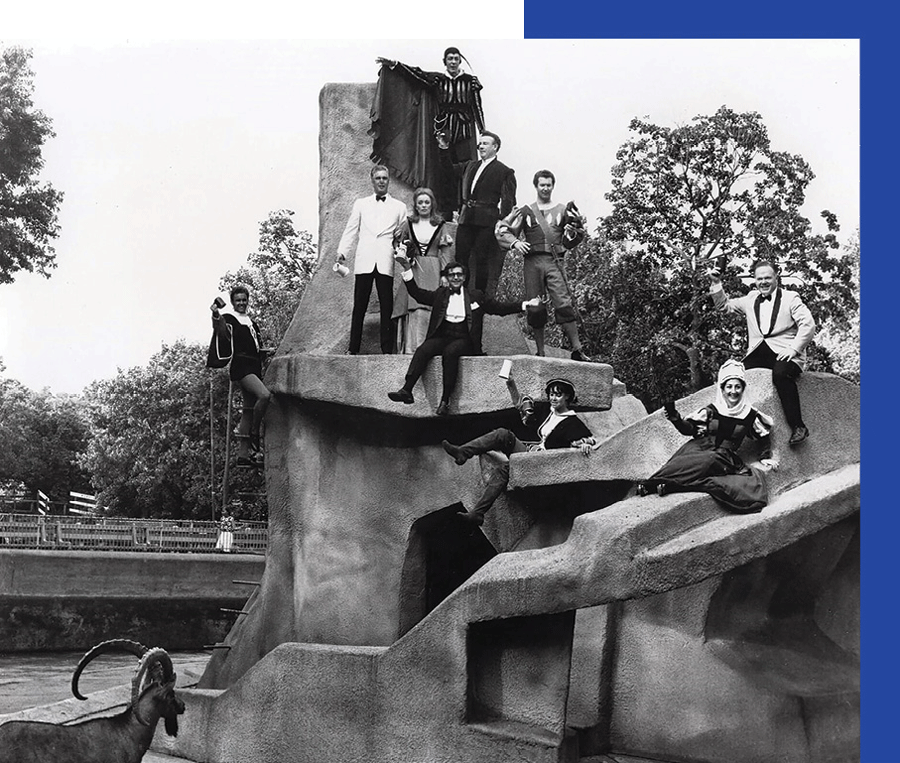
In the realm of fine art, the Cincinnati Museum Association (known today as the Cincinnati Art Museum) was formed in 1881. The South Hall of Music Hall was the Art Museum’s temporary location until its building in Eden Park, which remains its home today, was finished in 1886. The Art Museum currently houses an “encyclopedic art collection of more than 67,000 works spanning 6,000 years.”
For contemporary Cincinnatians, the link between the May Festival and the Cincinnati Symphony Orchestra is foundational, but complex. Starting in 1880, the relationship between Theodore Thomas, the May Festival and the College of Music grew bitter until the city of Chicago announced that Thomas had been hired to develop its symphony orchestra in 1891. The announcement dashed any expectations that Thomas would start a symphony orchestra in Cincinnati. Many attempts to create an orchestra in the 1880s and early 1890s had failed; then the Ladies Musical Club, which was founded in 1891 and had sponsored several concerts, turned its attention to establishing a permanent orchestra in Cincinnati. “They determined at the outset to maintain control of the Orchestra Association, limiting men to supportive roles” (Robert C. Vitz).
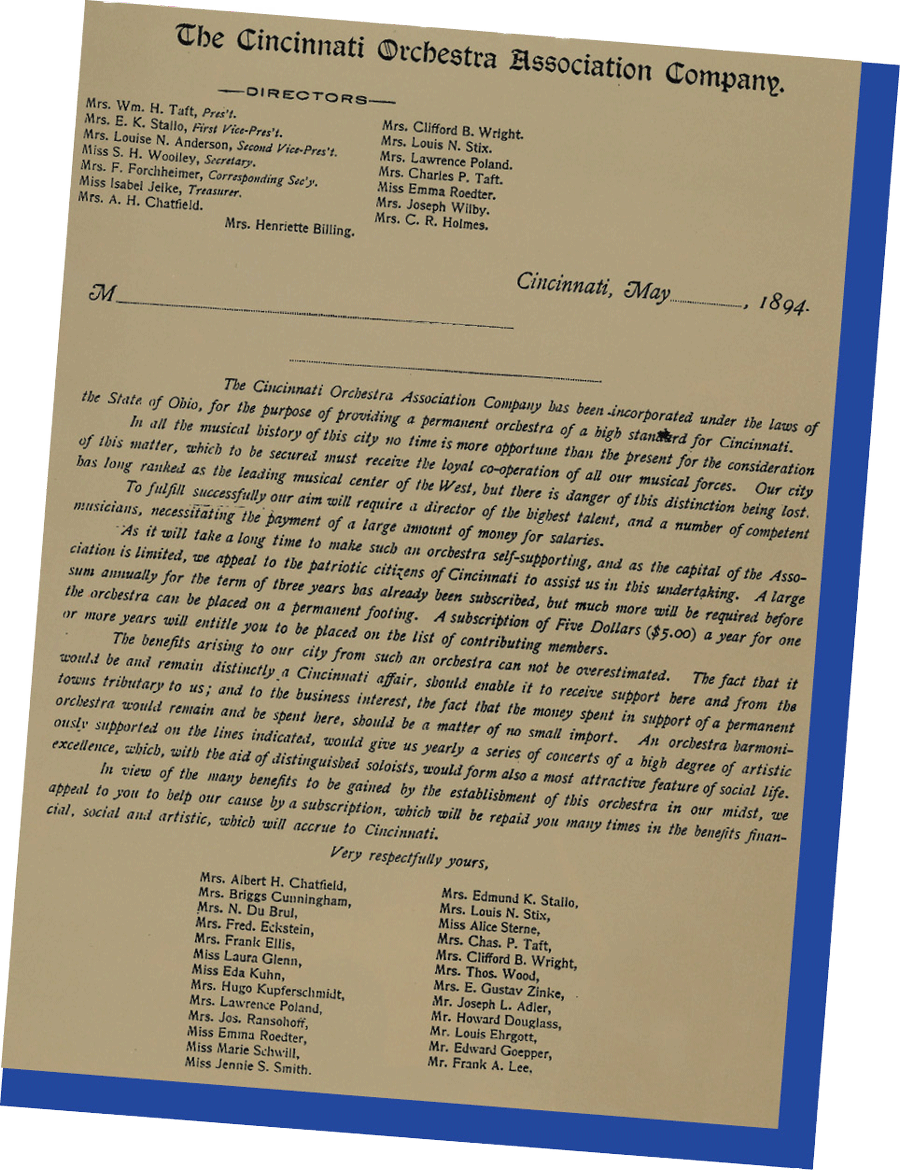
Led by Helen “Nellie” Herron Taft (who became First Lady of the U.S. when her husband William Howard Taft was elected president in 1908), the Ladies Musical Club started raising money and support for a new orchestra. Part of their planning was attempting to quell old feuds by selecting leadership that would bring Cincinnati’s fractured musical community together. Their plan was to select a music director who also directed the May Festival; however, this plan was ultimately blocked by the May Festival president. The Cincinnati Orchestra Association Company was founded in May 1894, and the Cincinnati Symphony Orchestra (CSO) held its first concert on January 17, 1895, conducted by Frank Van der Stucken. The CSO was the first orchestra in the U.S. to be founded by a group of women.
The Ladies Musical Club’s plan to see the CSO and the May Festival directed by the same person came to fruition in 1906, when the May Festival program listed Frank Van der Stucken as Music Director and the CSO as the orchestra. The CSO would remain the house orchestra of the May Festival but, in 1970, the practice of the CSO’s music director being the music director of the May Festival ended.
Today the Cincinnati Musical Festival Association and the Cincinnati Symphony Orchestra remain separate 501(c)(3) organizations, but they share administrative support through a shared services agreement that allows for combining resources and expertise to benefit all organizations.
It is a powerful testament to the people of Cincinnati who, in the last three decades of the 19th century, organized, formed and funded major professional music ensembles that have stood the test of time and have placed Cincinnati forever on the map as one of the finest musical cities in the Midwest.
